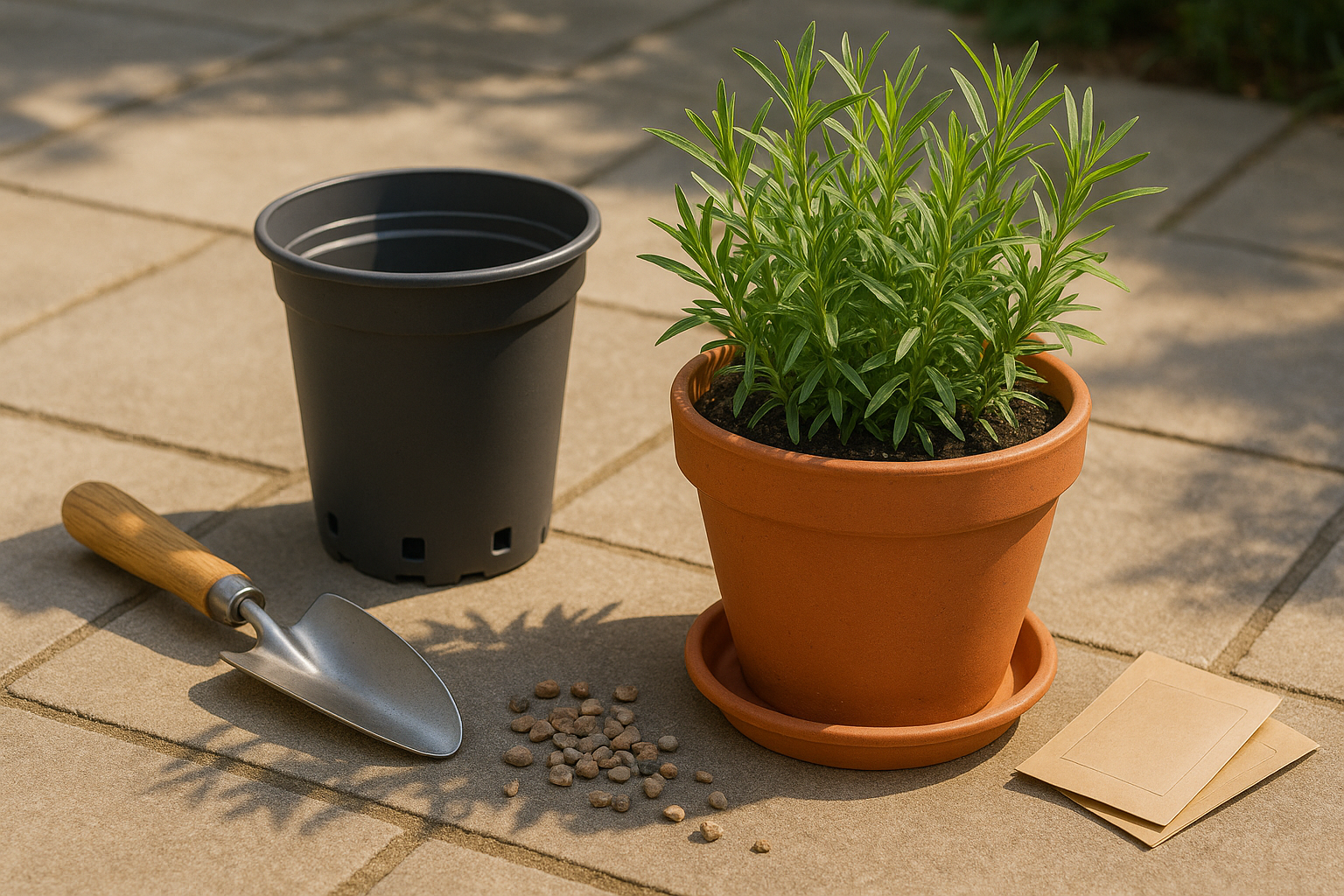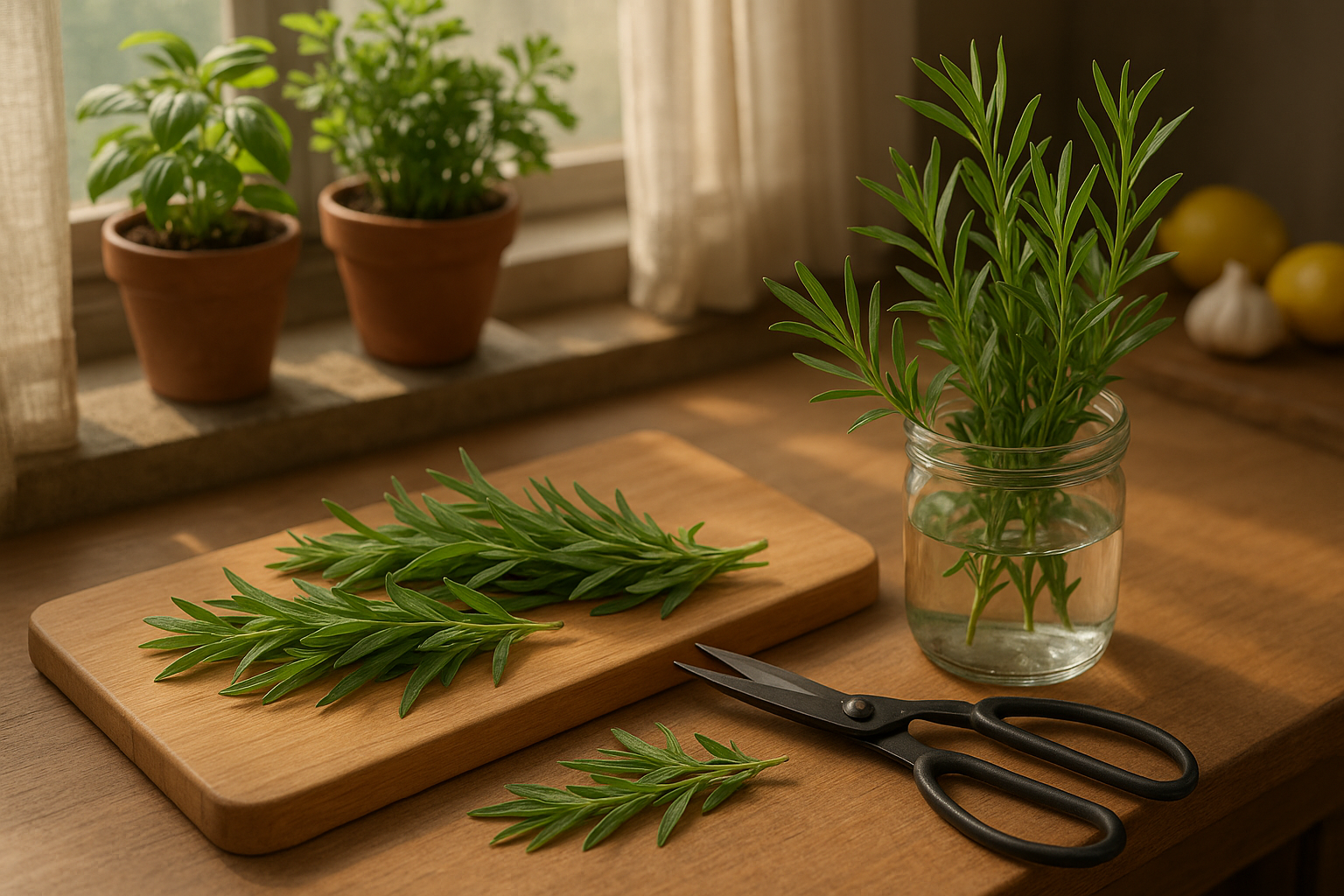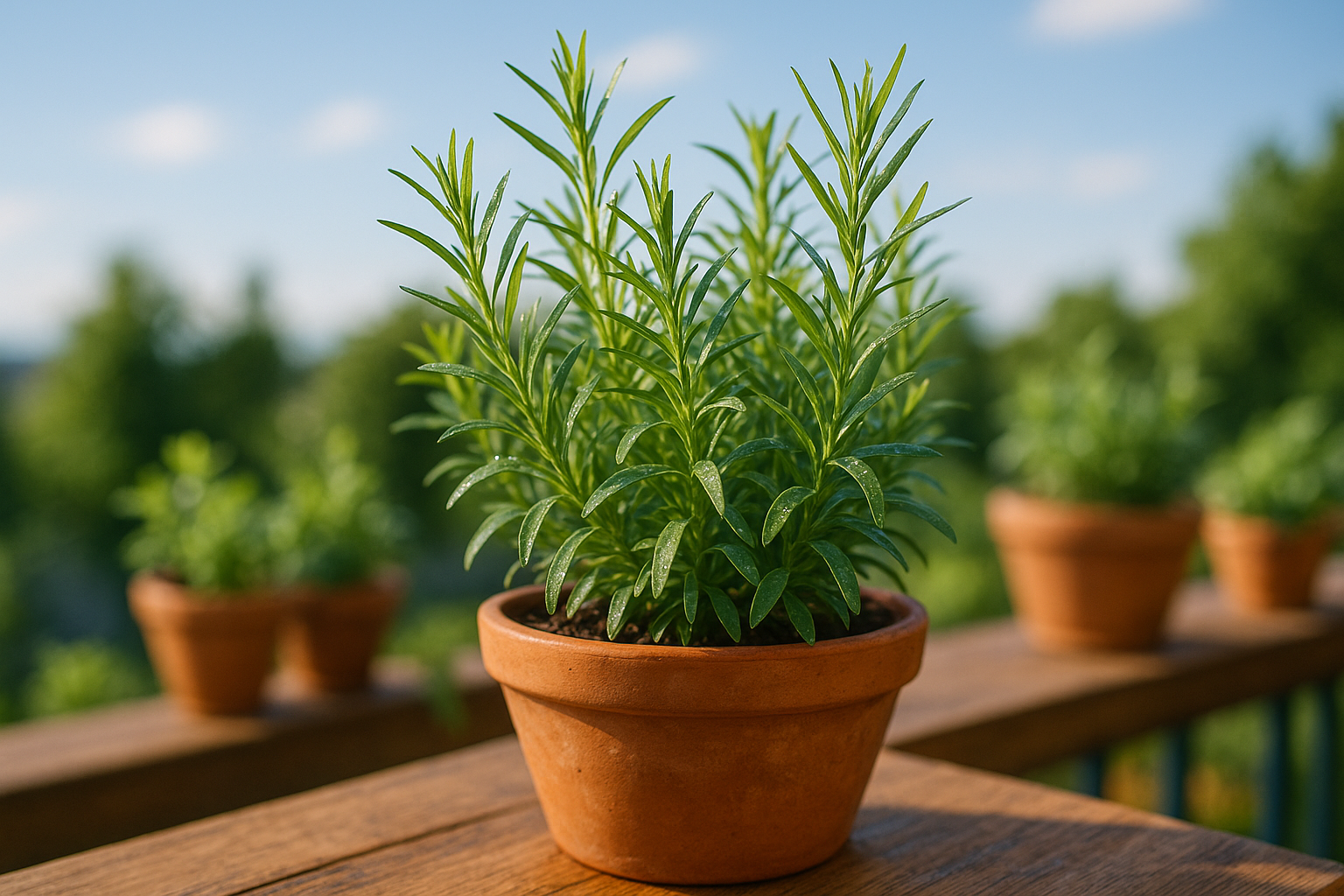Introduction to Growing Tarragon in Pots
Growing tarragon in pots brings a world of flavor and fragrance right to your balcony or kitchen windowsill. Tarragon is perfect for container gardening—even if you have limited outdoor space—because it thrives in well-drained soil, benefits from the controlled environment of a pot, and doesn’t need a large root system. This elegant herb is more than just a pretty plant: it’s a culinary staple, adding a distinctive anise-like flavor to classic French dishes like Béarnaise sauce, chicken, and fish. Its aromatic leaves are also a delight in salads or infused vinegars, making tarragon a must-have for any home chef or herb enthusiast.
For beginners and urban gardeners, container gardening with tarragon is both practical and rewarding. You’ll have quick access to fresh sprigs whenever you need them, without the commitment of a full garden bed. In this article, you’ll find step-by-step guidance—from choosing the right container and soil to promoting healthy growth—along with essential watering and harvesting tips. Whether you’re in an apartment, have a small patio, or just want to brighten a sunny countertop, you’ll discover everything you need to successfully nurture tarragon in pots and enjoy its fresh, aromatic benefits year-round.
Choosing the Right Tarragon and Container

When it comes to growing tarragon in containers, selecting the right variety is key for flavorful results and healthy growth. French tarragon (Artemisia dracunculus ‘Sativa’) is the go-to choice for most home cooks thanks to its delicate, anise-like flavor. It only propagates through cuttings and thrives in pots, making it ideal for container gardening. Russian tarragon (Artemisia dracunculoides), while hardier and more tolerant of variable conditions, lacks the distinct flavor prized in recipes; so for culinary use, French is your best bet.
For containers, choose pots that are at least 12 inches in diameter and depth to accommodate tarragon’s root system. Avoid shallow or narrow planters, as roots need space to develop and support lush growth. Unglazed terra cotta pots are an excellent option because they allow soil to breathe and release excess moisture, reducing the risk of root rot. Durable plastic pots with drainage holes can also work well in hot climates where moisture evaporates quickly.
Make sure your pot has plenty of drainage holes, and consider adding a layer of gravel at the bottom to promote further drainage. Place pots in a spot that receives at least six hours of sunlight daily, such as a south-facing patio or balcony. To encourage good airflow and minimize fungal problems, leave several inches of space between containers and avoid tucking pots into overly sheltered or crowded corners.
Regularly rotate pots if they’re on a windowsill to ensure all sides of your tarragon receive even sunlight and grow vigorously.
Planting Tarragon
When it comes to growing tarragon, gardeners usually prefer starting with cuttings or nursery plants rather than seeds—especially for the highly prized French tarragon. This is because French tarragon (Artemisia dracunculus var. sativa) rarely produces viable seeds, making propagation from cuttings, root divisions, or nursery plants the best way to ensure a flavorful, true-to-type harvest.
To get started, look for healthy tarragon plants at your local nursery—choose sturdy stems with vibrant green leaves. At home, you can create new plants by dividing the root ball in early spring or fall. Simply dig up the plant and gently separate the roots into smaller clumps, then replant each one about 18 inches apart to give them room to grow.
Another reliable method is taking stem cuttings: in late spring, snip a 3- to 4-inch piece from a non-flowering shoot, strip the lower leaves, and place the cutting in moist soil or a glass of water until roots begin to form. Keep your cuttings in a warm, bright spot but out of direct sunlight until they root, then move them to the garden or a pot.
If you’re interested in growing tarragon from seed, Russian tarragon is your best bet. Simply scatter seeds indoors about six weeks before your last frost, press them lightly into the soil, and keep them moist. Just remember, Russian tarragon has a milder flavor than its French cousin, so most cooks and gardeners still favor living starts for that classic taste.
Potting Mix, Watering, and Light Needs
When growing tarragon in containers, choosing the right potting mix is key for healthy, vigorous plants. Aim for a loose, well-draining soil blend—mix equal parts high-quality potting mix, perlite, and a handful of finished compost. This combination prevents waterlogging, which tarragon roots particularly dislike, while still providing essential nutrients. Tarragon thrives in soil with a neutral to slightly alkaline pH (about 6.5 to 7.5), so test your mix or add a bit of lime if your soil is too acidic.
Watering is all about balance: tarragon hates sitting in soggy soil but also doesn’t tolerate bone-dry conditions. The best rule is to let the top inch of soil dry out before watering again—a simple way to check is by sticking your finger into the soil up to your first knuckle. Make sure your container has drainage holes, and if you’re worried about overwatering, place some pebbles or broken pottery at the bottom to help excess water escape.
For light, tarragon loves full sun, needing at least 6 hours of bright, direct sunlight each day. If you’re growing indoors or in a spot with limited natural sunlight, position your pot near the brightest window you have—south-facing is ideal. For apartments or darker areas, a simple LED grow light works wonders; set it to run about 12–14 hours a day to mimic summer’s long days. If your tarragon starts looking leggy or pale, it’s a sign it’s craving more light, so don’t hesitate to adjust its spot. Rotate your pot every week to ensure even growth.
With the right soil, careful watering, and plenty of light, you’ll have fragrant tarragon at your fingertips, perfect for cooking year-round.
Fertilizing and Container Care Tips
Fertilizing tarragon in pots is all about balance—too much can burn the roots or affect the plant’s flavor. Use a balanced liquid fertilizer diluted to half strength once a month during spring and summer, when the plant is actively growing. Avoid fertilizing in fall and winter, as tarragon enters its dormant phase and won’t benefit from extra nutrients.
Rotate your pots every few weeks to give each side equal sunlight exposure, which helps prevent lopsided growth. Support taller stems with small stakes or a tomato cage if your tarragon gets leggy, especially in windy spots.
Refresh potting soil each spring by replacing the top couple of inches with fresh organic mix. Every 2–3 years, completely repot with new soil to maintain good drainage and nutrient levels.
As the seasons shift, watch the weather: bring your tarragon indoors before the first frost. Place it on a sunny windowsill and cut back growth slightly to reduce stress. If space is tight, an unheated garage or basement that stays above freezing works, too.
Regularly check for dry soil and water sparingly, as tarragon doesn’t like soggy roots—especially over winter. With a little attention, your container-grown tarragon will thrive year after year.
Pruning, Harvesting, and Using Tarragon

Pruning tarragon is key to keeping your plants lush and healthy. Start pruning as soon as the plant reaches about 6 inches tall—simply use sharp scissors or pruning shears to snip the top couple of inches off the stems, just above a leaf node. Regular pruning every two to three weeks encourages the plant to branch out, making it bushier and producing more flavorful leaves. Always remove any yellowing or damaged leaves as you go.
When it comes time to harvest, the best practice is to select young, tender stems in the morning after the dew has dried but before the heat of the day. Use clean scissors, snipping stems about 4–6 inches from the top, again just above a leaf node so the plant regenerates quickly. Don’t take more than a third of the plant at once to keep it vigorous.
Fresh tarragon spoils quickly, so for short-term storage, stand the cut stems in a glass of water on your counter, or loosely wrap them in a damp paper towel and keep them in the refrigerator for up to a week. If you need to store it longer, tarragon leaves freeze well—just chop and freeze in an ice cube tray with a splash of water or olive oil.
In the kitchen, fresh tarragon adds a sweet, slightly licorice flavor to chicken dishes, salad dressings, eggs, or even tucked into a jar of homemade vinegar. Try adding it at the end of cooking to capture its distinctive taste. For an instant flavor boost, toss a handful of chopped tarragon over roasted vegetables or stir it into creamy sauces.
Common Problems and Troubleshooting
Growing tarragon in containers is convenient, but some common problems can arise if you’re not careful. Pests like aphids and spider mites may appear, especially in warm, dry conditions. If you spot tiny insects or webbing, gently wash the leaves with a strong jet of water or try an organic neem oil spray, repeating weekly until the pests disappear.
Tarragon is prone to root rot if overwatered, so only water when the top inch of soil feels dry. Containers must have drainage holes to prevent soggy roots. Watch for powdery mildew, a white fuzz on the leaves, which thrives in poor air circulation. Space your plants and avoid crowding to encourage airflow.
A common mistake is using heavy, moisture-retentive soil—always choose a light, well-draining mix. Overfertilizing is another trap; tarragon prefers lean soil, so skip the extra plant food. Lastly, keep your planter in a sunny spot, as tarragon loves light, and poor sun exposure weakens plants.
Think prevention: inspect new plants, clean old leaves regularly, and water early in the day to reduce humidity. With these quick tips, your container tarragon will stay healthy and flavorful.
